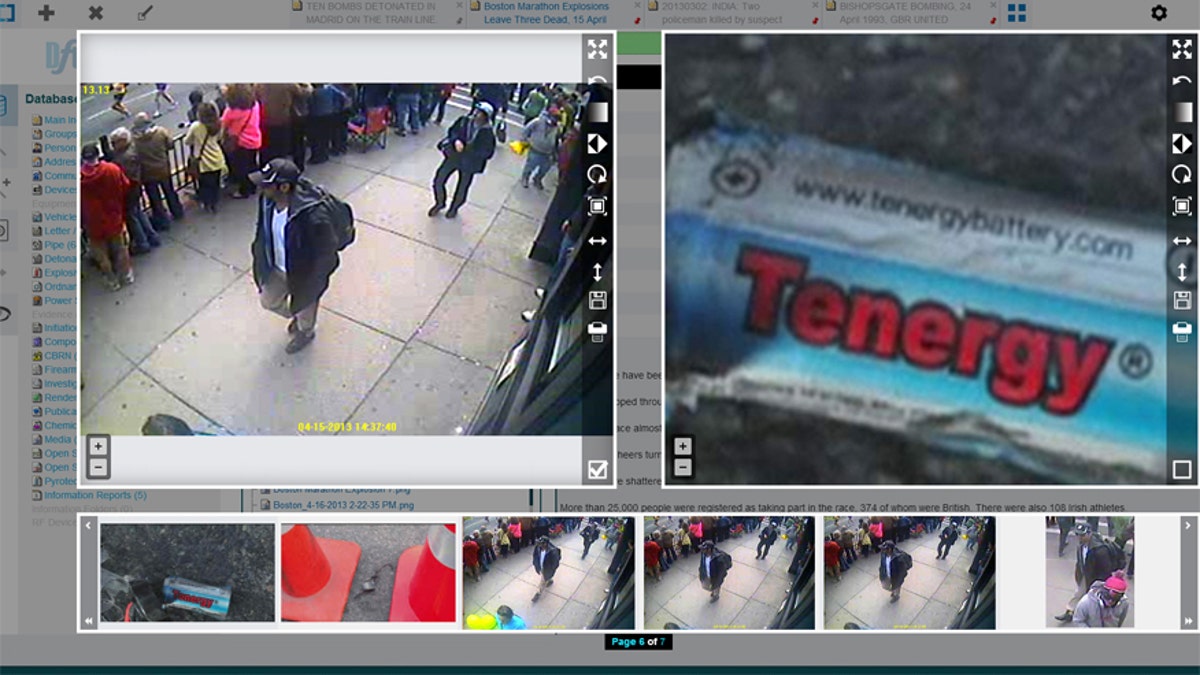
(Intelligent Software Solutions)
Dfuze, a specially-built software for law enforcement and the intelligence community, aims to help investigators link bomb fragments to bomb makers.
The technology has been adopted by high-profile organizations in more than 20 countries, including U.S. Special Operations Command, Bureau of Alcohol, Tobacco, and Firearms, the Canadian military, and U.K. law enforcement agencies. The U.K’s Scotland Yard was the first to use the technology as its bomb database.
The software was originally developed in the U.K., but is now owned by Colorado Springs, CO.-based Intelligent Software Solutions.
How does it work?
Dfuze can be used as a reference source for explosives, known terrorists and previous incident data.
It lets users share bomb images and device details. Suspect data such as birthdates, names and addresses can be entered, as well as information on suspected criminal activity and organizational ties. Other Dfuze data includes interviews with suspects, witnesses, and victims, as well as incident information and media reports.
Data can be added, securely stored, shared, linked, searched and retrieved.
To help identify and track bomb makers, the technology speeds up cooperation between incident investigators and worldwide law enforcement and international bomb data centers.
Utilizing databases like Dfuze can help investigators advance an explosives case by finding similar materials, techniques and other background data. It can be used on different platforms including a Web interface, a mobile app, and an open-source database called Report Desk.
Bomb signatures
Terrorist bombs don’t tend to look like they do in cartoons – they can be constructed to look like almost anything and can be placed or delivered in a multitude of ways.
Recent terrorist explosive devices have been created to look like underwear, like a soda can discarded on the side of the road or even a printer.
Most terrorist bombs are homemade and their design reflects factors like the bomb maker’s training, skill, resources and creativity. Investigators can identify a bomb maker’s signature even from fragments.
After an event, clues like wire, DNA, explosive powder residue and fingerprints can help to recreate the bomb, figure out the type of explosive as well as the bomb-maker’s level training and their identify.
Sharing information across borders is also essential for law enforcement to successfully stop bomb makers. The makers of major bombs tend to be international and have a particular signature.
Recent weeks have seen plenty of headlines about bomb makers.
Last week Bali bomber Muhammad Cholili known as the “smiling assassin” was released from jail. He helped to create the bombs used in a 2005 attack that killed 20 people and injured more than one hundred.
Anders Dale, an Al Qaeda-trained Norwegian bomb maker on the U.S. State Department’s designated terrorists’ list, was recently linked to increased U.S. airport screening. Dale’s whereabouts are not currently known, but he was reportedly trained by Al Qaeda bomb-maker in chief Ibrahim Hassan al-Asiri.
Al-Asiri, a skilled chemist, is believed to be behind many attempts to bring down transatlantic flights. He devised varied methods to hide explosives such as in underwear and printers.
Systems like Dfuze help investigators quickly search for data that could indicate a specific bomb maker’s ‘signature.’ This includes data on the explosives, known terrorists and previous incidents.
Intelligence on the move
Dfuze Mobile users also lets consumers connect securely via Wi-Fi, cellular data or satellite. This means that field operators can access vital information while en route to an incident.
When they are on the scene, users can upload crucial data, including multiple images, audio and videos from the scene and send it back to Command instantaneously.
Command can also monitor the location of incidents, unit positions and operators connecting to the secure server as well as view exactly where imagery was captured.
Dfuze Mobile can automatically delete scene information from the device after it is uploaded – ensuring the data is secure.
As the incident response evolves, the tech provides responders with an expanding Common Operational Picture in real time.
Dfuze Mobile is available for the iPhone, iPad, Blackberry and Windows Mobile.
